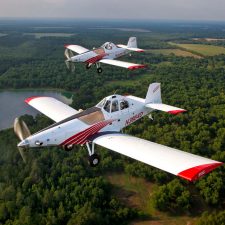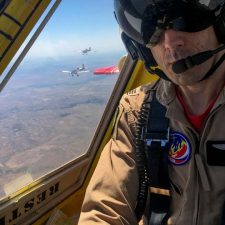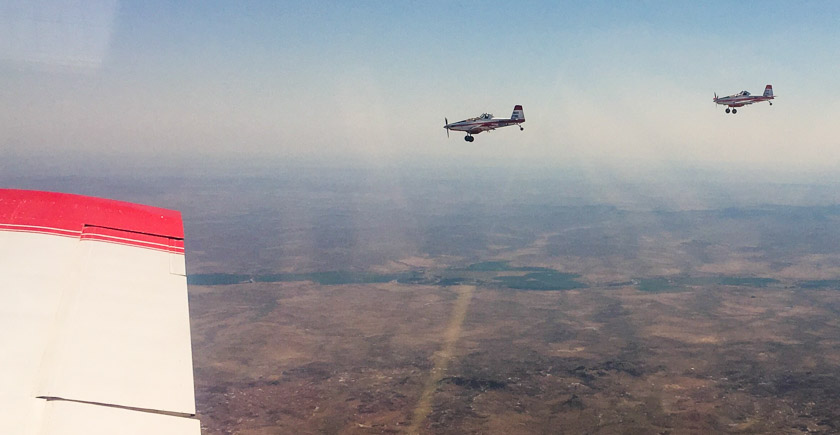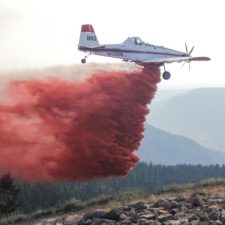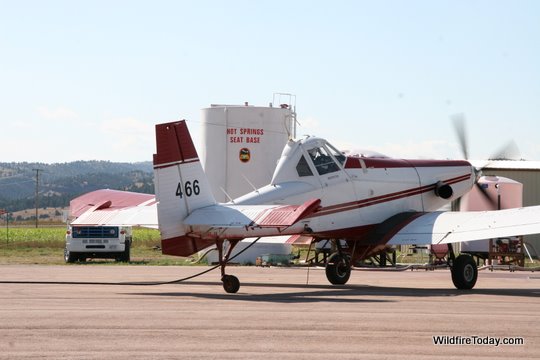At least two companies that have received contracts for providing firefighting air tankers and helicopters in Chile have been accused in Spain of collusion and international bribery among other crimes, according to a report by Ahora Noticias. Below is an excerpt from their article; it is very roughly automatically translated by Google:
Collusion, influence peddling, bribery and international bribery, among other crimes, have led to the investigation of the companies of Faasa, Inaer and Martínez Vidau in order to discover how they managed to win several public competitions.
The publication interviewed a consultant in disaster management, Rodrigo Reveco, who implied that a cozy relationship between the companies and the Chilean non-profit organization that has a hand in managing emergency operations, may help explain why there was a reluctance to bring in other aerial firefighting assets as the disastrous wildfire conditions worsened in December.
Chile has wildland fire suppression organizations and procedures that are very different from those in, for instance, the United States. There is no one governmental agency that has the authority, responsibility, and resources to manage wildfires. Recently the President of Chile, Michelle Bachelet, said via Twitter that she would recommend legislation to create a national forest agency.
The organization that deals most closely with fires in Chile is CONAF.
From Wikipedia:
The National Forest Corporation or CONAF (Corporación Nacional Forestal) is a Chilean private, non-profit organization, through which the Chilean state contributes to the development and sustainable management of the country’s forest resources. CONAF is overseen and funded by the Ministry of Agriculture of Chile.
It administers the forest policies of Chile and promotes the development of the sector with sustainable forest management.
CONAF and ONEMI, the National Office of Emergency of the Interior Ministry, according to Ahora Noticias have awarded contracts to the private companies for helicopters and Single Engine Air Tankers (SEATs) used on fires in Chile. From Ahora Noticias (again, a very rough auto-translation by Google):
These companies have been operating in Chile for years and have won millions of tenders from Conaf, Onemi and major national private companies. In Spain and after a long investigation of justice, its managers were arrested and the modus operandis of these firms were established, which, according to the judicial investigation, were coordinated among themselves to distribute the state tenders, agree prices and conditions Of presentation and also mechanisms of bribery to public officials to adjudicate the licitations, by means of payments, gifts and favors.
Among the antecedents seized, the Spanish justice system found a series of e-mails that report similar practices on the part of these companies, in Spain, as well as in Italy, Portugal and Chile. Correos between executives who speak of agreeing prices, sharing the market and conditions of presentation to the tenders, among others.
Neither the government or CONAF committed any funds for the use of the 747 SuperTanker. Up to now it has been completely funded by private organizations, Ben Walton and his wife Lucy Ana (of WalMart) and Luksic, a Chilean business consortium.
A Chilean Senator, Manuel Jose Ossandón, called for the resignation of the director of CONAF. From Ahora Noticias (translated):
Asked about his expectations after the news broadcast in Ahora Noticias, the former RN said that ” I hope that a deep investigation is made of what is happening and that it is clarified because we are already accustomed to acts of corruption.”
In that sense, he deepened that “the director of the Conaf has to step aside and also the previous director, Mr. (Eduardo) Vial, has to explain in this regard, ” referring to the first contracts between the State and These companies that date of the year 2011, that is to say, during the government of Sebastián Piñera.
ISSUU has an article about FAASA, a Spain-based company that provides under contract firefighting helicopters and SEATs to Chile. The company employs over 300 personnel including 100 pilots and operates 65 aircraft. During the South American summer they move five AT-802s and 21 helicopters to Chile.
One of FAASA’s SEATs crashed in Chile on December 28, 2016 killing the pilot, Ricardo García-Verde Osuna, 47.

